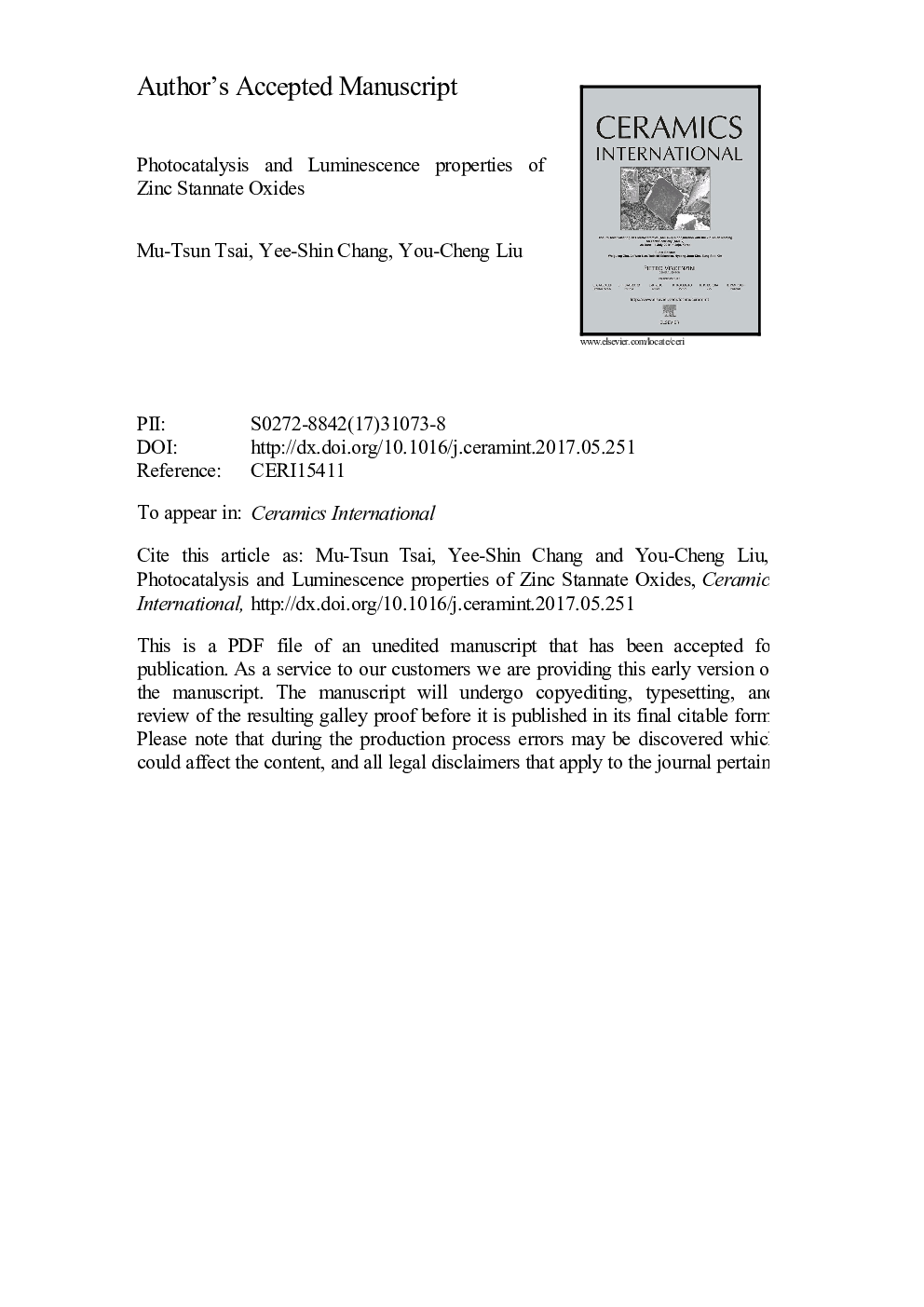| Article ID | Journal | Published Year | Pages | File Type |
|---|---|---|---|---|
| 5438863 | Ceramics International | 2017 | 27 Pages |
Abstract
In the present study, ZnO/SnO2 nanocomposites and Zn2SnO4 powder phosphors were synthesized via a sol-gel method through the control of annealing process. The coupled oxides ZnO/SnO2 nanopowders formed after annealing at 400-600 °C, and the spinel zinc stannate phase appeared at 700 °C. On annealing in the temperature range of 1000-1200 °C, Zn2SnO4 is the dominant phase with small traces of ZnO and SnO2. The photocatalysis evaluation indicated that the photocatalytic activity of ZnO/SnO2 nanocomposites for the degradation of azo dye Acid Orange 7 (AO7) was much higher than those of pure ZnO and SnO2 under near UV light irradiation. The higher photocatalytic activity is related to the formation of nano-heterostructures, which provided an effective way to suppress the charge recombination and enhanced the degradation efficiency consequently. Under excitation at 327 nm, photoluminescence (PL) spectra revealed the Zn2SnO4 powder phosphors having a weak n-UV emission and a broad visible emission around 400-700 nm with peaking at 548 nm. Chromaticity diagram exhibited the Zn2SnO4 powders having the characteristics of near white light emission. The results show that ZnO/SnO2 nanocomposites and Zn2SnO4 powders have potential applications for the nanophotocatalysts, display, and solid-state lighting devices, respectively.
Related Topics
Physical Sciences and Engineering
Materials Science
Ceramics and Composites
Authors
Mu-Tsun Tsai, Yee-Shin Chang, You-Cheng Liu,
